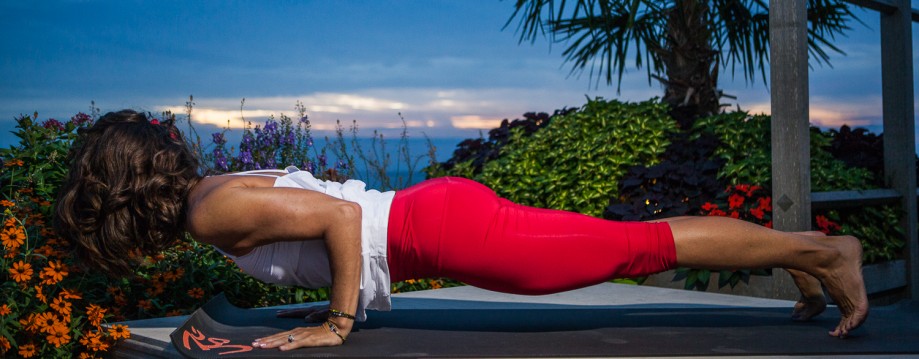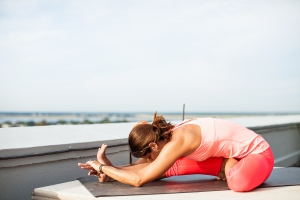One of the best accessories you can bring to your yoga practice comes from a children’s book, also an old wives tale. It doesn’t cost you a thing and it looks better on you than those new yoga pants. What is it…it’s curiosity! You need to bring this to your practice more than you actually need to bring a yoga mat. Mat’s are just for comfort, but curiosity is for transformation. It’s the fertilizer for any life changing work you are hoping yoga will facilitate. In the children’s book “Curious George” George, the little monkey was always on some adventure, all because he was curious. There’s also the old wives’ tale that cats are given 9 lives and their curiosity puts them in jeopardy of running out of those 9-lives. I once heard that if you have found yoga in your current life, it’s because you were a yogi in your past life, and that you will keep coming back to yoga until the work is done. Maybe we yogi’s get something like the 9-lives of a cat for navigating this yoga journey.
I see people all the time coming to yoga with the latest yoga mat, coolest yoga attire and the best sweat absorbing rug, along with the latest prop that they believe will help them execute pincha mayurasana. But I don’t see them bringing any curiosity to their practice. Curiosity is evident in people who are experiencing results and progressing along nicely. But I have seen some people practice for 5+ years and their practice is not evolving. The reason is they have no new approaches. They are going about their practice as they always have: wrought with predictability, smothered with unwillingness and drowning in disinterest. Disinterest is like a wet blanket to the fire of curiosity.
Where does curiosity come from? Do we all get our fair share? Look, right now I am being curious about where curiosity comes from. Can’t get any more curious than that. We were all curious at one time. Around about age 3 we start filling our heads with as much information as our little selves could handle. We did this by using the symbol for curiosity, the question mark (?). So that means that when practicing yoga (but really life in general), we should be asking more and more questions. This is the way out of ignorance (Avidya). In the yoga sutra’s the definition of ignorance/avidya is seeing the impermanent as permanent (Sutra 2.5). For all those people who believe they can’t, they don’t understand yet that everything is always changing. Everything is impermanent. The way through ignorance is questioning the state of things. As sutra 2.26 says Vivekahyatir Aviplava Hanopayah – Uninterrupted discriminative discernment is the method of removing ignorance. So here’s your ammunition for a good yoga practice – How? What? And Why? “When” is not terribly important because if your asking How? What? and Why? the “when” will take care of itself. Too many people set themselves up for failure by taking things at face value, believing what they have heard from others. Life is meant to be questioned, and the more you do, the more you grow.
One example that I can give is my approach to the sensations I feel during yoga. If I run into pain or an injury, I take it upon myself to find out what muscle the pain is coming from and what that muscle’s function is. I identify and examine; the same way a good detective would examine a suspect. I suspect that muscle is the cause of such pain, but I must first gather all the information that I can about it. I always say when I’m teaching a class that you need to approach your yoga practice the way Jacque Cousteau approached his love of the sea, with curiosity and passion. Before He passed away he had been an explorer, conservationist, filmmaker, innovator, scientist, photographer, author and researcher. All of his great accomplishments were because he was curious. It’s the same thing that had Christopher Columbus sail the ocean blue, and Buzz Aldridge navigating through space. There is endless opportunity for discovery, but only if you question and challenge everything you know and hear.
Next time you want to have a great experience on your yoga mat, don’t try to reinvent one you already had, by wearing the same clothes, or putting your mat in the same place. Do away with predictability. Come at your practice with new eyes. Approach it with what I call the 3-year-old brain. Ask lots of questions, and try a bunch of different approaches. Get used to saying “that was interesting, but what if I did this.” Stay captivated by your body’s adaptability. Be open to uncharted territory. I often say during Surya Namaskar “Inhale and look toward horizon”. Christopher Columbus must have been looking out at the horizon when he thought, “there must be more out there, that we haven’t explored yet.” Keep the horizon in mind, for keeping the dreamer inside of you alive.
It’s probably no coincidence that one of yoga’s fabled character role models is Hanuman, a monkey, just like Curious George. Let your inner monkey do what’s most natural – be curious. Stay open to the idea that ALL things are possible. If you’re not so sure just go roll out your yoga mat and let your teacher and all the students around you inspire you. Dream big, and don’t accept that what seems permanent, is permanent. Curiosity really is your best accessory no matter how good you look in those new yoga pants. Don’t mistake outward appearances, for the real benefit of inner work.


